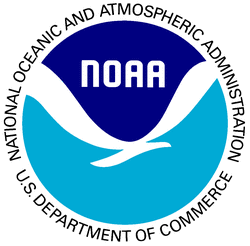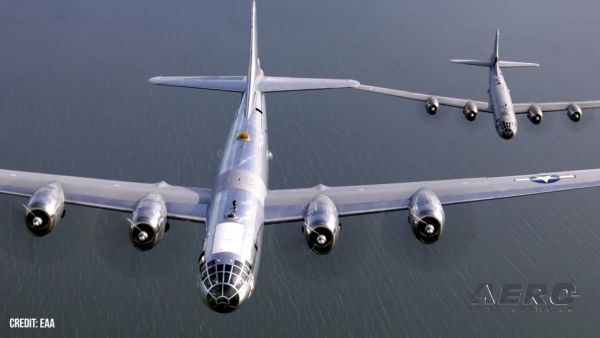Pilots Could Face Six-Figure Fines For Overflights Of Marine
Sanctuaries
Overflight of certain marine sanctuaries below 1,000 feet msl,
or in some cases below 2,000 feet msl, could result in fines of up
to $100,000 imposed by NOAA, according to the AOPA. The accusation
can be made based on observations by persons with no aviation
background, and the burden of proof is on the pilot to show he or
she did not disturb any wildlife during the flights.

The new rules have been published in the Federal Register and go
into effect February 27th. The are nearly unchanged from the NPRM,
which was opposed by many of aviation's "letter groups," including
AOPA.
In the regulations, the FAA, which did not oppose the rules,
cedes to NOAA the authority to place flight restrictions over
certain marine sanctuaries. The rule as published in the Federal
Register states "The National Marine Sanctuaries Act (NMSA)
authorizes NOAA to prohibit or otherwise regulate activities to
prevent or minimize the destruction of, loss of, or injury to a
resource of a national marine sanctuary (16 U.S.C. 1436(1)).
"Regulations for the Monterey Bay, Channel Islands, Gulf of the
Farallones and Olympic Coast National Marine Sanctuaries all
restrict low altitude overflights within specified zones in each
sanctuary (subject to certain exceptions) in order to protect
marine mammals and seabirds from disturbance by aircraft. At
Monterey Bay, Channel Islands, and Gulf of the Farallones, flights
below 1000 feet are prohibited within the designated zones.
"At Olympic Coast, flights below 2000 feet are prohibited within
one nautical mile of Flattery Rocks, Quillayute Needles, or Copalis
National Wildlife Refuge, or within one nautical mile seaward from
the coastal boundary of the sanctuary. These regulations vary
slightly with each sanctuary. The regulations for the Monterey Bay
and Olympic Coast sanctuaries prohibit overflights below a certain
level within designated zones— 1000 feet in Monterey Bay and
2000 feet in Olympic Coast, as noted above— without requiring
a specific showing that marine mammals or seabirds have been
disturbed. The regulations for the Channel Islands and the Gulf of
the Farallones prohibit disturbing marine mammals or seabirds by
flying below 1000 feet within specified zones of the
sanctuaries.
"With this final rule, NOAA has standardized these regulations
by adopting a single, consistent and clear regulatory approach
regarding overflights in these sanctuaries. The regulations for
each sanctuary now establish a rebuttable presumption that flying
motorized aircraft below the existing minimum altitudes within any
of the existing zones results in the disturbance of marine mammals
or seabirds. This means that if a pilot were observed flying below
the established altitude within a designated zone, it would be
presumed that marine mammals or seabirds had been disturbed and
that a violation of sanctuary regulations had been committed. This
presumption of disturbance could be overcome by contrary evidence
that disturbance did not, in fact, occur (e.g., evidence that no
marine mammals or seabirds were present in the area at the time of
the low overflight). Adding a rebuttable presumption to these
regulations is justified by ample evidence in the administrative
records that were developed for the designations of these
sanctuaries. These administrative records describe the need to
protect
nearshore and offshore resources from unnecessary disturbance, and
explain how low altitude overflights can disrupt various marine
mammal and seabird
behavior patterns, including breeding and nesting.
"Low overflights in these sites clearly pose a risk of harmful
disturbance to marine mammals and seabirds, including movement and
evacuation in response to low overflights where the young (pups,
chicks, eggs) are crushed during an evacuation or exposed to
predation as a consequence of loss of parental protection. Indeed,
given the connection between low overflights and disturbance, the
Southwest Region of the National Marine Fisheries Service developed
marine mammal viewing guidelines for its region (which includes the
three California sanctuaries), recommending that aircraft avoid
flying below 1000 feet over marine mammals.

"Similarly, the State of California prohibits overflights less
than 1000 feet above designated wildlife habitat areas within the
state waters of each sanctuary off of California. In the Olympic
Coast National Marine Sanctuary, offshore islands of the Flattery
Rocks, Quillayute Needles, and Copalis National Wildlife Refuges
have high pinnacles that provide important habitats for 14 species
of seabirds, warranting the prohibition on flights below 2000 feet
in this sanctuary to better protect these sanctuary resources. This
prohibition is further consistent with an advisory published by the
Federal Aviation Administration (FAA) that applies to these same
areas (FAA Advisory Circular AC 91–36D). The existing NOAA
overflight regulations are not indicated on current FAA
aeronautical charts. The FAA has advised NOAA that with the
promulgation of this final rule, it will revise the notation on
current aeronautical charts to indicate the sanctuaries’
overflight regulations. The notation on FAA aeronautical charts in
no way imposes additional FAA obligations on aircraft operators.
Rather, NOAA expects that the revised notation will likely result
in improved compliance and thereby help to ensure the protection of
resources under
NOAA’s stewardship."
 ANN's Daily Aero-Linx (04.15.24)
ANN's Daily Aero-Linx (04.15.24) Classic Aero-TV: 'No Other Options' -- The Israeli Air Force's Danny Shapira
Classic Aero-TV: 'No Other Options' -- The Israeli Air Force's Danny Shapira Aero-News: Quote of the Day (04.15.24)
Aero-News: Quote of the Day (04.15.24) Airborne 04.16.24: RV Update, Affordable Flying Expo, Diamond Lil
Airborne 04.16.24: RV Update, Affordable Flying Expo, Diamond Lil ANN's Daily Aero-Term (04.16.24): Chart Supplement US
ANN's Daily Aero-Term (04.16.24): Chart Supplement US




